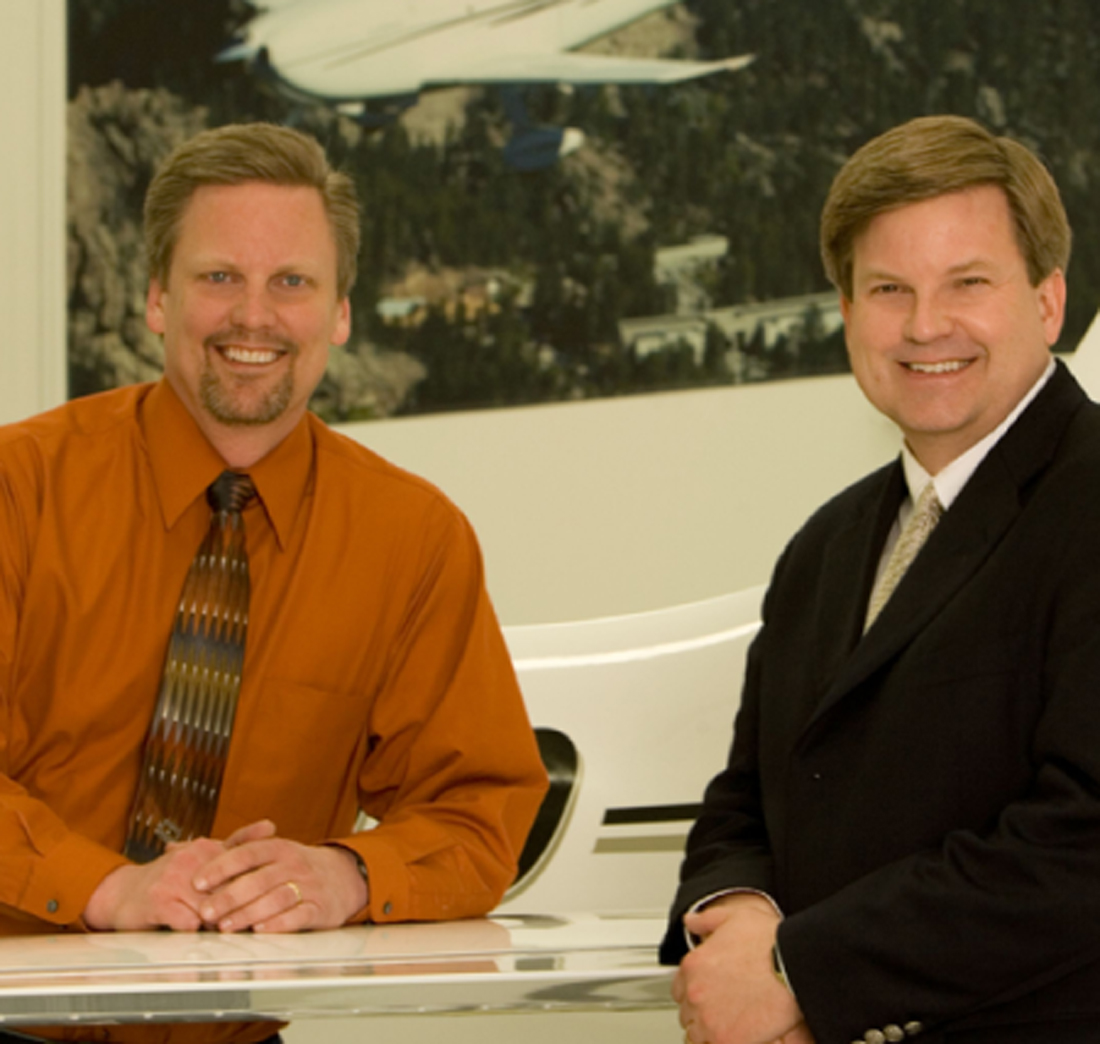While Alan Klapmeier was still in college, he and his brother Dale had a favorite subject: talking about going into business together.
“We talked about the kind of aircraft and company we’d have, perhaps building ultralights or maybe starting a company that built composite airplanes,” he said. “I’m sure that separately, we also wondered, ‘Are we going to get jobs being bankers or do some other kind of business?’ But, from 1979 on, we started thinking about what kind of aviation manufacturing company we would have.”
They finally decided to form their company in 1984, the year they also began working on the VK-30, their airplane design.
“We had drawings of the VK-30 five years before that,” Dale said.
The VK-30, a composite pusher with conventional wings and tail, would eventually be the first kit aircraft featured on the cover of Aviation Week and Space Technology.
“It was a four- to five-seat aircraft,” Alan said. “Three people could sit across the backseat. We decided to do a pusher, because we were thinking a lot about high performance and natural laminar flow. We believed we could get increased natural laminar flow on the fuselage and higher performance if the propeller wasn’t out front.”
Dale said they liked the pusher design for a number of reasons.
“Speed was certainly at the top of the list,” he said. “If we put the single biggest airplane part, the engine, in the middle of the airplane, we could get a smaller frontal area with increased laminar flow. Moving the noisy prop and exhaust away from the cabin would make it quieter inside. Also, everything in the cabin brings the center of gravity forward.”
In 1985, they cut the first parts for the fuselage, in the lower level of their parents’ barn. After moving into the farmhouse to be closer to their project, the brothers built a hangar on the farm.
“We didn’t have to pay rent, and the barn became our factory,” Alan laughed. “Those were lean times; we ate a lot of macaroni and cheese.”
The brothers had formed Cirrus Aircraft Corporation as an exploratory company. In 1987, its successor, Cirrus Design Corporation, was formed in Wisconsin. Dale says that their parents, who were shareholders in the original company, are most likely relieved now that Cirrus is successful.
“That’s probably the right word, given how many times we had to ask for money to help cover payroll,” Alan laughed. “Mom and Dad had also started a business, so they knew how hard it was. They were supportive during horrible, hard times. Parents don’t want to see their children suffer. They’re glad we’ve survived.”
These days, their parents are definitely proud of what Alan and Dale have accomplished.
“The company is much bigger and more successful than they expected,” Alan said. “But they wouldn’t say it’s bigger than they ever dreamed. Everyone in the family has always had ‘limitless dreams.’ As we would describe what we thought this was going to be, they certainly would have had the same dream that it would work, and that Cirrus would be this big or even bigger.”
Dale smiles when he thinks about his parents’ involvement.
“They’ve been there for us since we first said we were going to build airplanes,” he said. “They never once said, ‘You can’t do that,’ or ‘It won’t work.'”
Alan corrected his brother.
“Actually, they did say, ‘It won’t work.’ But they didn’t say, ‘You can’t do it.’ They always told us we wouldn’t starve,” he recalled. “They said, ‘You can always move back to the farm,’ and, ‘It’s better to be broke when you’re young!'”
Alan remembers how “Cirrus” found its way into the company name.
“We rebuilt part of the wings under the deck down in Illinois,” he said. “Dale would’ve still been in college. We were driving his friend’s pickup truck from Dekalb up to the farm. I think we were hauling parts for the Champ. We were passing Jamesville. We had decided Klapmeier Aircraft Company didn’t have the right ring to it; we spent about an hour talking about company names, going back and forth. That’s when Dale suggested ‘Cirrus.'”
Dale disagrees with part of the story, saying they were driving down from the farm, probably around 1979, to Chicago, but agrees with the main point.
“We were driving because we couldn’t fly,” he said. “The weather forecast was for thunderstorms, and VFR wasn’t recommended. The only cloud we saw all day was a cirrus cloud. Cirrus clouds are what you want to see as a pilot; they’re the fastest, fair-weather cloud. We first thought of naming our airplane ‘Cirrus,’ but we agreed at that moment to name our company Cirrus.”












